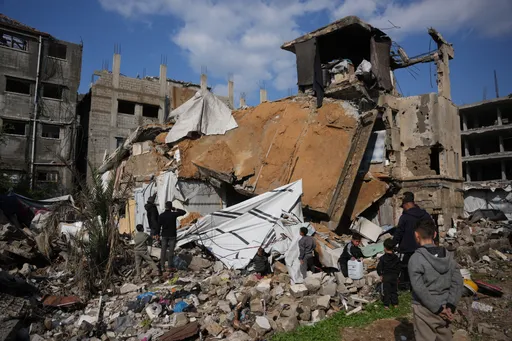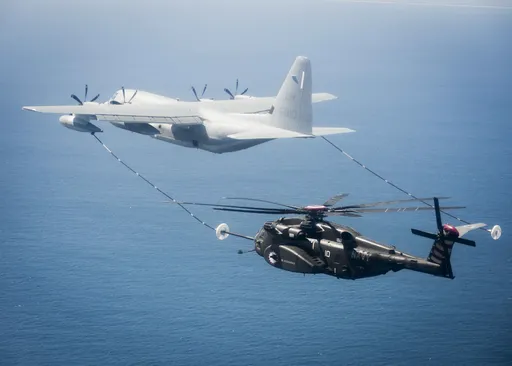World leaders, civil society groups and environmental activists will converge in Glasgow starting on Sunday October 31 for the 26th United Nations Conference of the Parties, or COP26.
Ahead of the key climate negotiations, TRT World has put together some key terminology to highlight the stakes for the Global South.
COP26
Let’s start with the basics. This will be the 26th gathering of world leaders and civil society delegates of countries that have signed the UN Framework Convention on Climate Change (UNFCCC). COPs bring those signatory governments together once a year to find common ground and set out a roadmap for global action to address climate change.
UNFCCC
The UN Framework Convention on Climate Change entered into force on 21 March 1994 and has near-universal membership. The 197 countries that have ratified it are the “parties” to the Convention. Its aims are ambitious, namely to stabilise emissions "at a level that would prevent dangerous anthropogenic interference with the climate system." However, it doesn’t set out how to achieve that goal, leaving the task to the yearly COP negotiations instead.
Paris Agreement
It’s on everyone’s lips, but what exactly is the Paris Agreement?
Adopted at COP21 in Paris in 2015, it’s a legally-binding international treaty on climate change that aims to limit the rise in global temperatures to well below 2, preferably 1.5 degrees Celsius compared to pre-industrial levels. The treaty works in five-year cycles of action with supposedly incrementally ambitious goals to limit global warming.
NDCs
Nationally Determined Contributions, known as NDCs, are each country’s climate commitments to reach those Paris Agreement goals. In other words, each country sets its own emissions reduction targets and puts forward some details of how it intends to meet them. These are updated every five years, making this COP particularly important.
The last submitted targets in Paris in 2015 would result in catastrophic warming of over 3 degrees Celsius. Because rich countries are far bigger emitters than developing countries, their governments are under greater pressure to submit ambitious targets. G20 nations are responsible for 75 percent of global greenhouse gas emissions, and yet the targets submitted so far for COP26 fall short of reaching the 1.5 degrees Celsius goal. It’s worth keeping in mind too that emissions are not static and that so-called “carbon leakage” still takes place through global trade, for instance.
WIM
WIM stands for Warsaw International Mechanism for Loss and Damage associated with climate change impacts. Just like the Paris Agreement, it carries the name of the city where it was signed at COP19 in Poland in November 2019.
It establishes processes to address climate harm associated with the impacts of climate change, including slow-onset events and disasters.
It’s a key moment for developing countries that have historically contributed far less to climate change because it enshrines the principle that rich countries are morally responsible for climate change. The idea behind it is that those who are most affected should be compensated for their losses. It is not, however, legally binding.
Loss and damage
But there has been no agreement so far about what loss and damage actually is. The idea was first introduced by small island states drowning due to rising sea levels that have forced some communities to relocate and even prompted one pacific island country, Kiribati, to buy land elsewhere. It recognises that some of the effects of climate change cannot be reversed.
Developing countries have been arguing that a dedicated financial mechanism is needed to address it, while others say it should come under the umbrella of adaptation. Loss and damage will be addressed at the beginning of week 2 of the COP26 negotiations, alongside – you guessed it – adaptation.
LDC Group on Climate Change
The Least Developed Countries Group on Climate Change coordinates negotiations on behalf of the world’s 46 poorest nations as defined by the UN. It describes itself as a group of countries that are “especially vulnerable to climate change but have done the least to cause the problem.” The group is currently chaired by Bhutan.
Ahead of COP26, the LDC said it will push to ensure major emitters submit more ambitious targets, and that existing climate finance goals are met - an existing commitment by wealthy nations to provide $100 billion in climate finance per year by 2020 has yet to be fulfilled. The group opposes the use of carbon credits, or the buying and selling of licenses to pollute in one place while offsetting those emissions elsewhere.
AOSIS
The Alliance of Small Island states will represent the interests of 39 small island and low-lying coastal developing states in the negotiations. First established in 1990 during the Second World Climate Conference in Geneva, its main remit has been to influence environmental policy on behalf of Small Island Developing States (SIDS) that are particularly vulnerable to sea level rise and coastal erosion.
Debt-for-climate swaps
You are unlikely to hear much about debt-for-climate swaps as Glasgow unfolds, but the idea has been gaining steam since Covid-19 began ravaging the economies of middle and low-income countries that were already facing high debt levels. Debt-ridden SIDS, among others, have been advocating the use of this financial instrument that would allow countries to receive debt relief and use the funds freed to finance climate adaptation and mitigation projects, making them more resilient to future shocks.
























